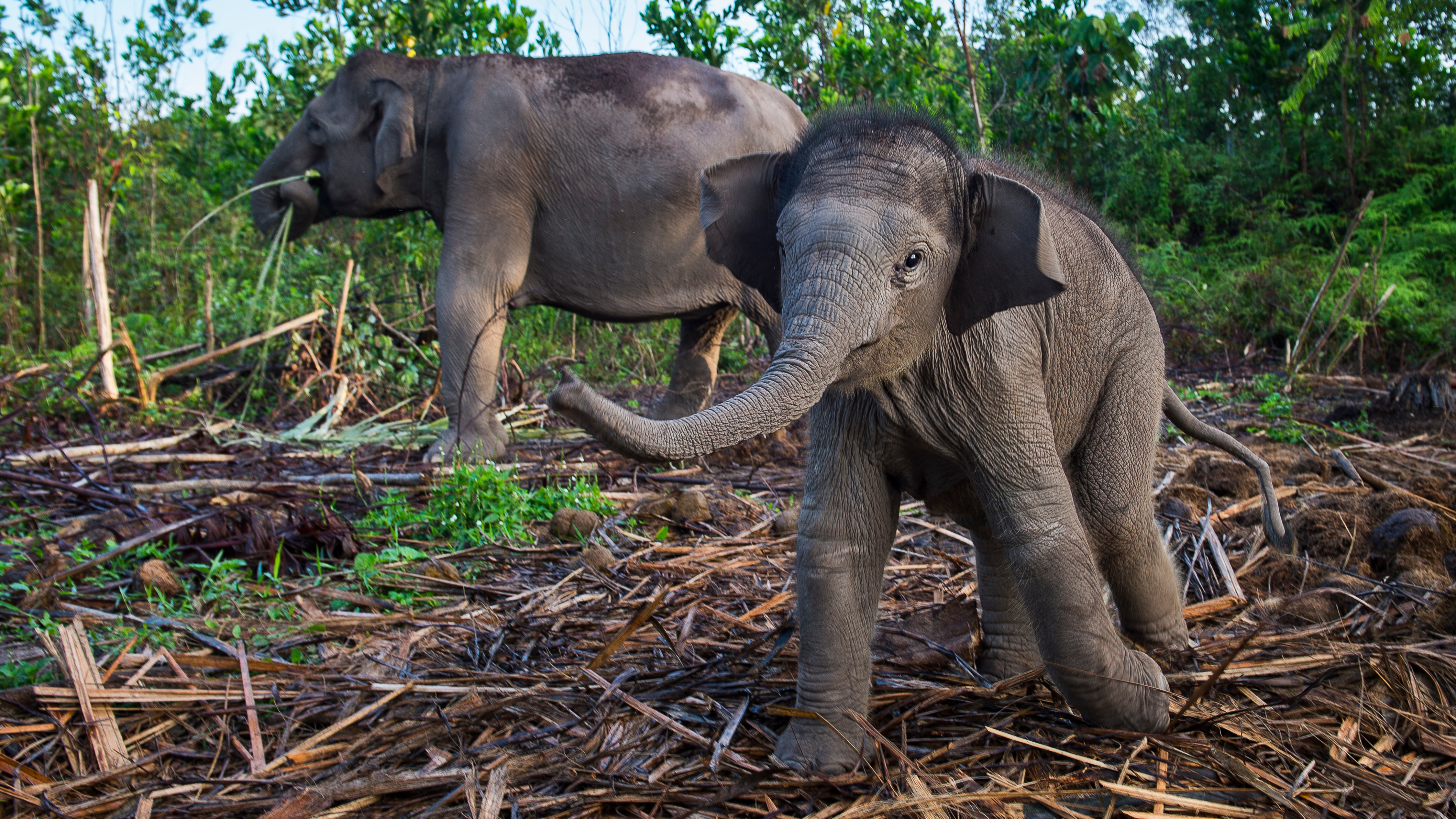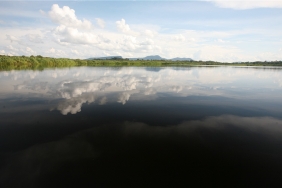THE LOVE STORY OF JUNJUNG AND RAHMAN (PART 2)
By: Syamsidar
Get to know the story of the meeting between Junjung and Rahman, mahouts and elephants from the Flying Squad team in Tesso Nilo National Park.
Junjung got to know elephants in mid-1999 when there was an opening for an honorary position at the Riau Natural Resources Conservation Center. A high school graduate, he had migrated from South Tapanuli, North Sumatra, and was in desperate need of a job. He had no idea that the job at hand would involve taking care of elephants.
Junjung admitted that he was very surprised when he was first brought to the PLG, especially when he was told that his job was to take care of elephants. He could not imagine such a job at all.
"At first glance I thought, this is exactly like being told to herd buffaloes in my village. Even though I migrated to look for work," said Junjung to himself.
But all those thoughts were thrown away, what came to mind was that he had to survive overseas. And so began his days with the elephant until now.
"The first three months I was not trusted to hold the elephant but was told to look for grass to feed the elephant," Junjung recalled.
Then he was given the responsibility to take care of a small elephant who was about 7-8 years old. "The female elephant, named Monika, was still half-finished," says Junjung, recalling the first elephant he cared for. Monika was not yet fully tamed as she had only been captured a few months earlier by officers from BBKSDA Riau due to an elephant conflict in one of Riau's elephant enclaves. At that time, she could not be ridden but was still being carried along. His seniors continue to monitor him and provide assistance and input so that Junjung can successfully conquer this small elephant, which is still quite wild.
"Even when I managed to ride Monika, I had a serious work accident, said Junjung. Monika was running so fast that my balance went out of control, I fell but one of my legs was still caught in Monika's neck harness. I was dragged several meters."
"I don't know what Monika had in mind. She pressed me against a tree, my neck was already pressed against the tree. " explained Junjung.
But fellow mahouts, supervisors and paramedics on duty at the time immediately helped Junjung. "I don't remember anything and was immediately rushed to the hospital. I had to rest in the hospital for a month because of some injuries I had," said Junjung.
Junjung's parents who came to visit him also forbade him to return to being a mahout seeing the risks of the job. But Junjung was determined to stay because he could not find another job. After recovering, he returned to the PLG and took care of Monika again. Slowly, Junjung was able to "subdue" Monika.
In early 2001, Junjung was given the task of taking care of a large adolescent male elephant named Reno.
"Taking care of male and female elephants has different challenges," says Junjung.
"Males have tusks so we have to be extra careful taking care of them besides their behavior is much more reactive than female elephants," he added.
In mid-2004, Junjung had to part with Reno because he joined the Flying Squad team in Tesso Nilo. The encounter with Rahman in Tesso Nilo was not the first for Junjung because previously at PLG, although not in charge of caring for Rahman, Junjung was quite familiar with Rahman's behavior.
Rahman was an elephant captured by Riau BKSDA on September 23, 1995 from one of the elephant enclaves in Riau, namely from Pulau Gadang Village, the elephant enclave of Koto Panjang Hydroelectric Power Plant - Kampar Regency. He was estimated to be about 10 years old at the time. And now Rahman is about 30-32 years old.
At that time, to support the construction of the Koto Panjang Hydroelectric Power Plant project, the villagers were relocated. The hydropower plant was intended to supply electricity to the Riau and West Sumatra regions. Not only the residents, the elephants that also inhabited the area were saved by moving them to several places, one of which was to the Minas PLG.
This hydropower plant uses Kampar River water as a source of turbine drive, the inlet to the dam cross section of this hydropower plant is in the Rantau Berangin area. As a result of making a dam or reservoir for this hydropower plant, several villages in the area around Koto Panjang became submerged, so that the residents' settlements were moved.
Koto Panjang Hydropower Plant has an installed capacity of 3 x 38 megawatts (114 MW). In the dry season, its capability shrinks to produce only 60 MW. This is due to the limited water discharge of the river. (source Wikipedia).
Junjung was previously a mahout at PLG-Minas. When he was appointed by his supervisor to join the Flying Squad team in Tesso Nilo, he was proud to be selected from among the many other mahouts in PLG. Not only because of the better offer, but he wanted to try a new challenge in the world of elephant care. He had also spent five years at PLG Minas working with elephants and thought being a member of the Elephant Flying Squad would be different as the team would help deal with elephant conflicts.
Tesso Nilo is the last remaining lowland forest in Riau. It is home to around 150 acres of Sumatran elephants, almost half of Riau's Sumatran elephant population. However, due to land use change and encroachment, the elephant's home range is becoming increasingly narrow. Settlements, oil palm plantations and abandoned land have replaced the elephants' natural habitat. Meanwhile, oil palm plantations planted in elephant crossing areas often trigger conflicts between elephants and humans. Elephants eat young palm trees or young palm fronds and the community feels disadvantaged because they have to replace the crops eaten by elephants. And so conflicts occur, often handling conflicts is not in accordance with procedures and even elephants are poisoned, causing death to elephants.





